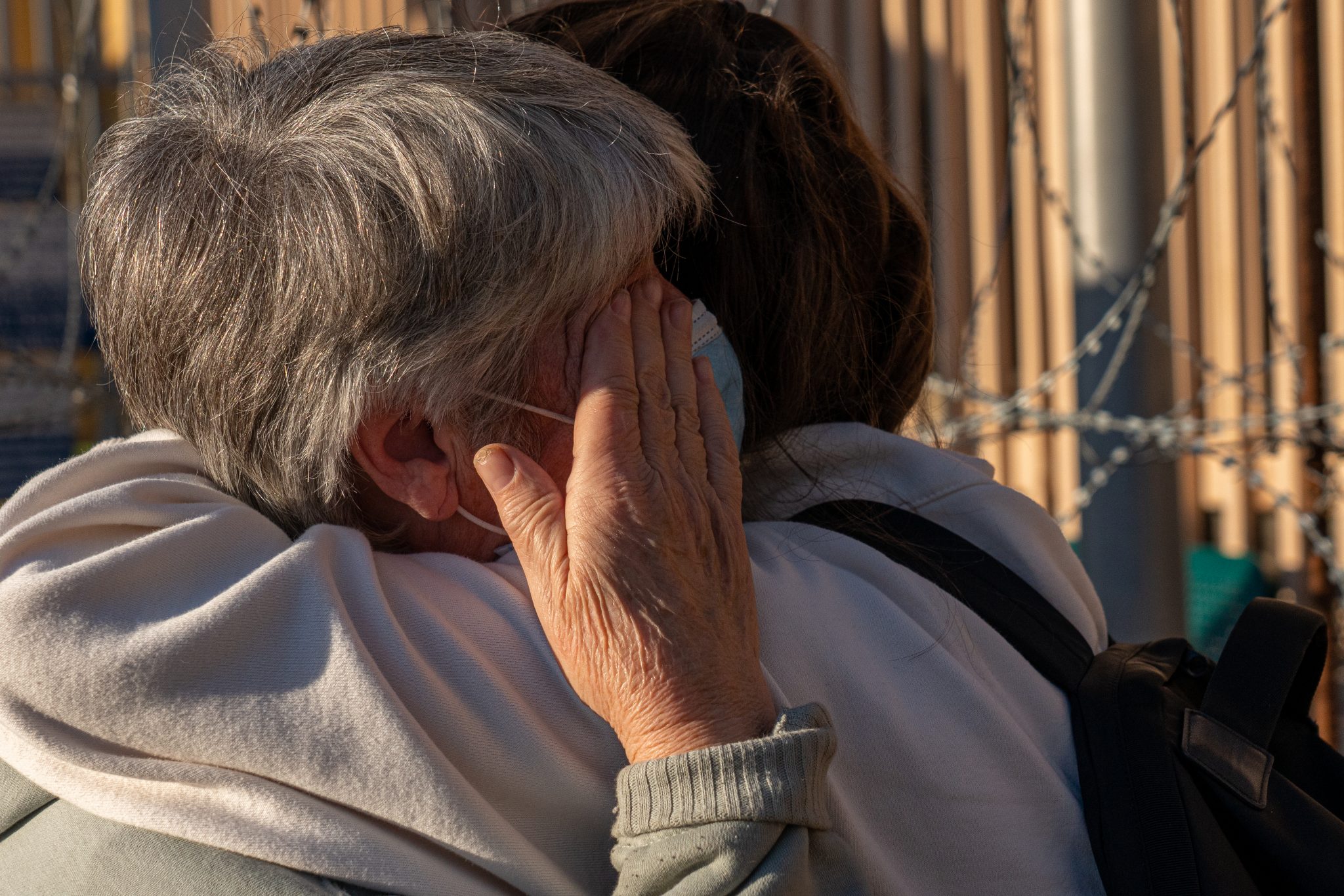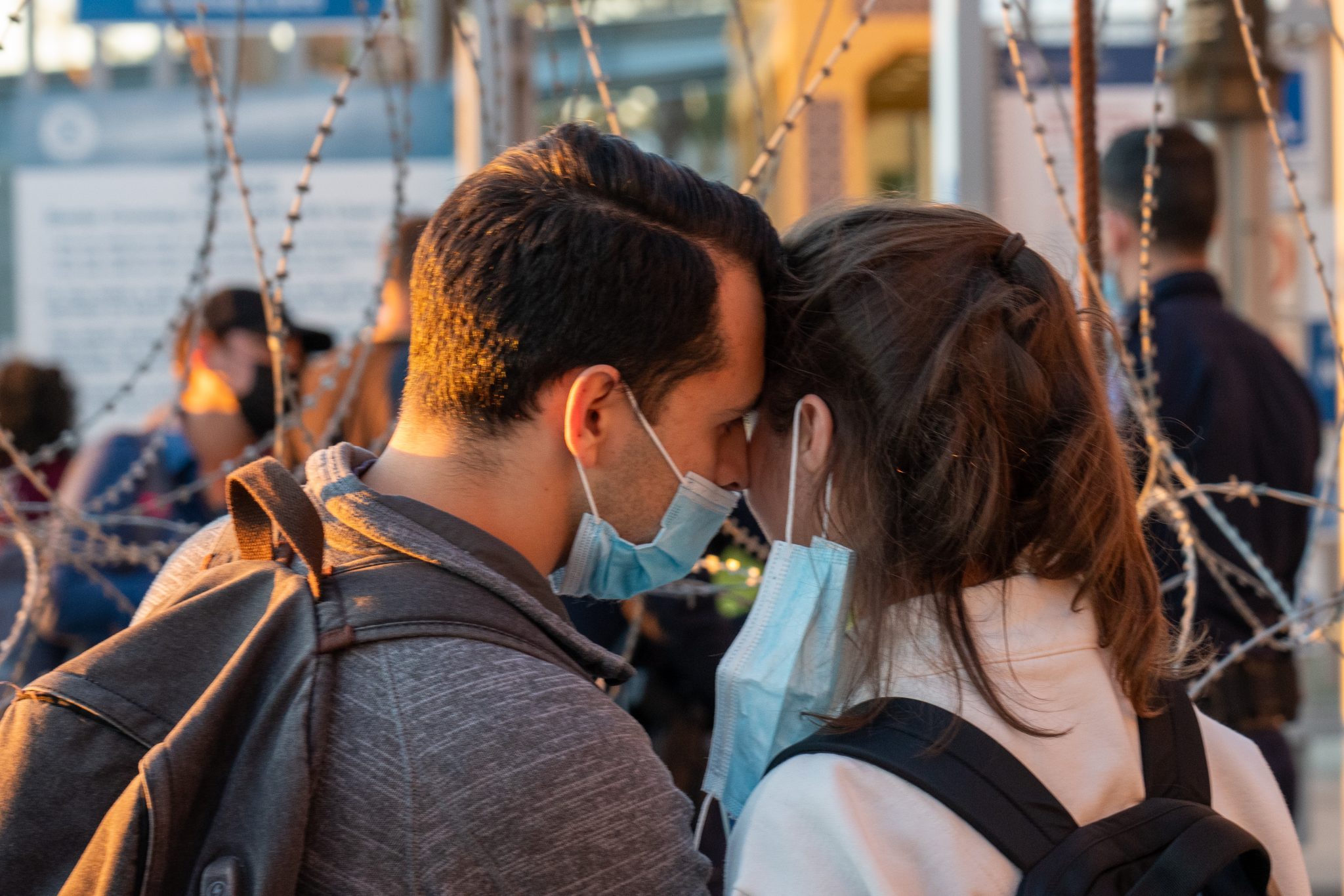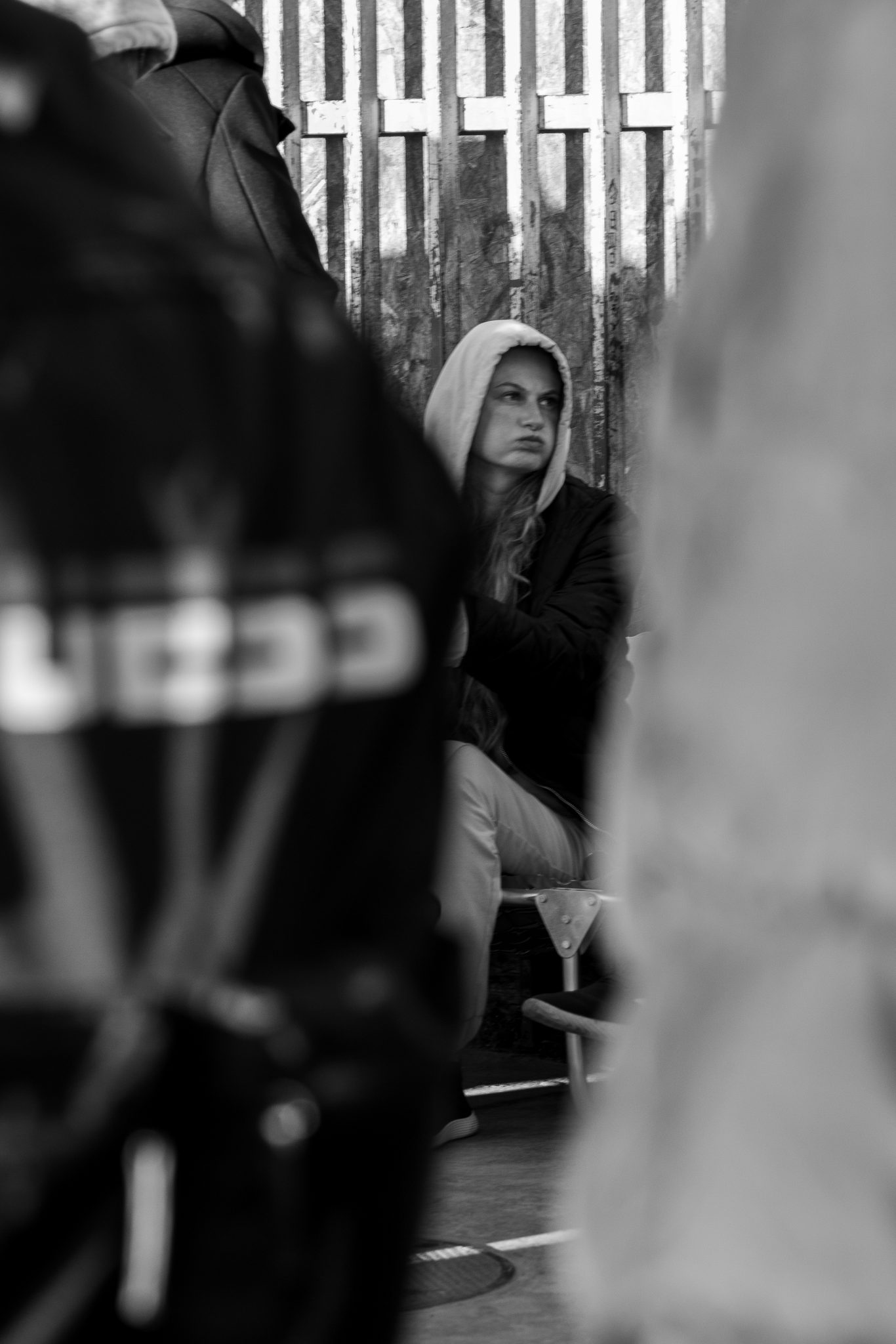

A Customs and Border Protection agent tells Ukrainian refugees to “wait in line like those families over there who have waited for two nights” at the San Ysidro Port of Entry in Tijuana, Mexico, on March 12, 2022 (Francisco Lozano/ Latino Rebels)
TIJUANA, Mexico — While the world watches a humanitarian crisis unfold as Russia wages war on Ukraine, the Tijuana port of entry on the U.S. border is yet again seeing what the city has grown accustomed to: another immigration crisis, this one centered on Ukrainians seeking asylum and refugee status.
While helping the families of a wartorn country is the right thing to do, a blatant contrast emerges in the way other asylum seekers are treated and the dire, unbearable conditions that for months on end, Central Americans, Mexicans, Haitians, and Cameroonians have had to endure.


A Ukrainian family waits for hours to be called in and processed at the San Isidro Port of Entry in Tijuana, Mexico, on Saturday, March, 12, 2022. (Francisco Lozano/Latino Rebels)
At first, some Ukrainian families were turned away. Later, families with children were allowed as the Biden administration lifted Title 42, which was set in place by the Trump administration under the pretense of avoiding the spread of COVID-19 and kept active under President Biden due to a court ruling from Texas.


A Ukrainian grandmother embraces her granddaughter at the San Ysidro Port of Entry in Tijuana, Mexico, on March 12, 2022. (Francisco Lozano/Latino Rebels)
Caravans of asylum keepers from Latin America, Haiti, and Cameroon had been blocked from entering the U.S. to apply for asylum, forced instead to “Remain in Mexico” under the Migrant Protection Protocols (MPP) and Title 42, spendings months in frigid temperatures at makeshift tent cities—which removed last month by local authorities.


Another Ukrainian refugee family waits to processed for entry into the United States in Tijuana, Mexico, on March 12, 2022. (Francisco Lozano/Latino Rebels)
Some may argue that Ukrainian refugees cannot be compared with asylum
seekers from Latin America, Haiti, or Cameroon.
One young girl recounts how her relatives and her one-year-old were killed in Mexico.


A Ukrainian couple embrace each other while waiting to be allowed entry into the United States in Tijuana, Mexico, on March 12, 2022. (Francisco Lozano/Latino Rebels)
A mother told the story of how her husband was killed by cartels when he refused to work for them. “I packed a few things and fled with two children before they killed us too,” she said.
On July 7 of last year, Haitian President Jovenel Moïse was assassinated.
Wars have many fronts, many faces, many levels. The faces of children suffering violence and trauma are all the same.
“My family and I are Ukrainians living in Russia, from the Saint Petersburg area,” said one asylum seeker who asked to remain anonymous. “At a protest in Russia against the war, I barely unfolded a sign and police arrested me right away. We left the next day.”
“We had to make the long journey from Ukraine to Poland, to Paris to Mexico City (where our luggage was stolen and then inward to Tijuana,” they explained.
Advocacy groups that applauded the change in policy to grant entry to war refugees took to Twitter to express concern that other asylum seekers were not allowed the same, fair treatment.
Keep in mind that Central & South American, Haitian, African, etc refugees are turned away every day, and even the most vulnerable are denied humanitarian exemptions. No way this case would have been approved if this woman were not Ukrainian
— Erika Pinheiro (@eeerox) March 10, 2022
I will keep retweeting this from time to time. We need to help Ukrainian refugees, but we also need to help refugees from Syria, Haiti, Cameroon, Guatemala, Honduras, El Salvador etc. It is clear that we believe white refugees more than Brown or Black. We can change that. pic.twitter.com/D7id66dizW
— Jenn Budd (@BuddJenn) March 14, 2022


A weary Ukrainian refugee rests after two nights without sleep on a sidewalk in front of the San Ysidro Port of Entry in Tijuana, Mexico, on March 12, 2022. (Francisco Lozano/Latino Rebels)
***
Francisco Lozano is a freelance photographer and writer based in Los Angeles and has covered extensively the migrants and asylum seekers at the Mexican border. Twitter: @FrancisLozano7



this is a real humanitarian crisis. theirs isnt a choice
this isnt for economic reasons
What do you mean by “economic reasons”,?
as if there exists some category of migrants who have non economic reasons to migrate..?
Absurd rationale. There are no reasons that fall under “non economic reasons”.
None… All threats to life are economic reasons since life is a verb, not an adjective..(living); geographic locations of those macroeconomic exogenous shocks and resultant responses by people are about disruption of their lives.
That axiomatically constitutes decision making under uncertainty within an economic domain.
Connecting words together grammatically in a correct fashion doesn’t necessarily render empirical substance to any proposition.
These refugees can go to Russia, applying your standards of treatment towards primarily nonwhite refugees from nonwhite countries…
Macroeconomic exogenous shocks happen all the time to labor markets and capital markets causing transnational labor flow distributions to vary. War is a macroeconomic shock. Using your rationale of “economic” versus “non economic” migrants .., maybe you should be consistent and ask these migrants from Ukraine to go to Russia, India,China…?
Hey baci, fleeing Ukraine is an economic choice. You attribute the twin heuristic of “choice” and “economic refugees” with no consistency towards your own proposition. They have a choice to go to Russia and be part of it. They chose not to because their economic lives have been ruined by an exogenous event…war.
South ,Central American economic refugees don’t live in isolation from exogenous macroeconomic variables that affect their lives in a myriad of ways over which individual agency is curtailed,or nonexistent.
You seem to diminish this empirical reality, or attribute a value of zero to the empirical reality of what primarily nonwhite migrants/refugees experience.
Ambition to escape a shithole comes with many different ladders , as shitholes come in many different dimensions.
[…] acuerdo con autoridades, unos 100 ucranianos ingresan al país a diario, pero tienen que llenar algunos formatos, cuestionarios y tienen que dar […]